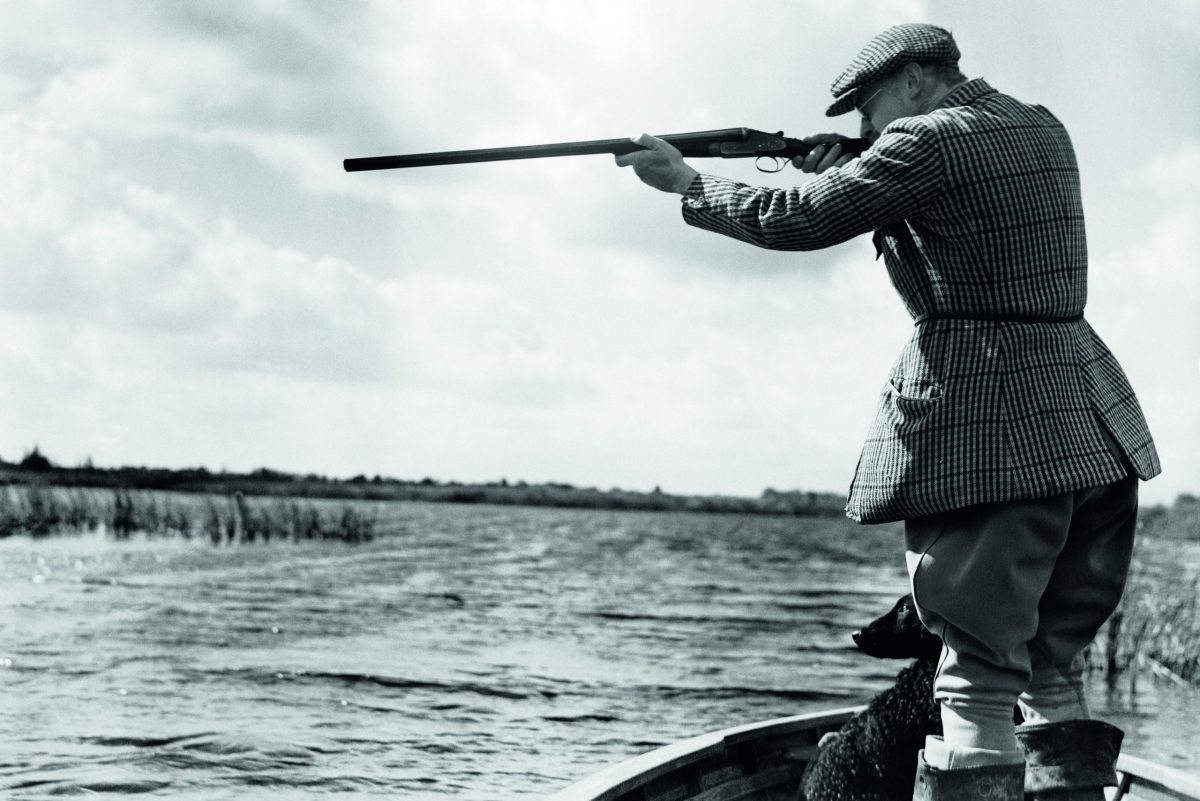What fieldsports and conservation have in common
Fieldsports and conservation have always gone hand in hand, and they have more in common than some naturalists might care to admit

James Wentworth Day helped wildfowling take on national significance
In 1931, as the world began slipping inexorably into warfare, a book was published in the UK that was to have far-reaching and long-lasting consequences. Max Nicholson, the founder of the British Trust for Ornithology, launched his “practical guide to field observation”, The Art of Bird Watching.
In a new hardback, Passions for Birds: Science, Sentiment, and Sport, Professor Sean Nixon describes Nicholson’s work as a “manifesto for a new kind of birdwatcher. At its core was a plea for a more organised and scientific approach. No longer should the birdwatcher be someone ‘who rambles about the countryside until chance puts something in his way’. Rather, they should develop an ‘intense concentration of scope.’”
Sean shows how Nicholson’s book ultimately contributed to the Protection of Birds Act 1954 and the vast increase in subscriptions to the RSPB.
At around the same time, in 1934, James Wentworth Day published his hugely popular The Modern Fowler, aiming to ensure “the finest sport obtainable with the gun”. In some ways it was the antithesis to Nicholson’s work; it was a eulogy to wildfowling. Wentworth Day wrote poetically and passionately, promoting the gamekeepers who protected the “balance of nature” and railing against “marsh-cowboys and cockney gull-shooters.”
Wentworth Day elevated wildfowling to the level of a religion, “a supreme moment in which just to stand and stare”. The Wildfowlers’ Association of Great Britain and Ireland’s (WAGBI, now BASC) membership boomed as a result.
Expert
I meet Sean Nixon on a blustery March afternoon. He and I are near-neighbours in north-east Essex. I’m keen to ask him what led to a book that shows how shooting and conservation evolved alongside one another. Sean is professor of sociology at Essex University. He speaks with the measured authority of an expert in his field.
Already published in five previous books discussing society in the 20th century, Sean explains that he had absolutely no knowledge of wildfowling before he began researching his subject. But he was fascinated by just how passionately everyone engaged with the process of passing the Protection of Birds Act. “I wondered what made them all so committed, what motivated them,” he explained.
In his chapter entitled “Wildfowling and Sporting Naturalism”, Sean explains the powerful influence of wildfowling, of Shooting Times and of WAGBI in the inter-war years and beyond. He explains how Sir Peter Scott took on almost celebrity status as the 1954 act took shape. He shows just how interconnected the bodies pursuing protection, shooting, falconry and what he calls ‘bird-harvesting’ actually are.
“My untheorised, unformulated position was vaguely anti-shooting,” Sean explains. “But as I researched my book, it became clear that Wentworth Day and Scott were charismatic and hugely influential. As a result, wildfowling took on national significance. And the position of fowlers as harvesting a sustainable resource is still very persuasive. What I discovered in the 10 years of research that went into Passions for Birds is that, for all their differences, new traditions in birdwatching, conservation and fieldsports mobilised remarkably similar feelings and remarkably similar practices towards birds. They still do.”
Sean’s book is academic. It’s hefty. The notes and bibliography cover nearly 100 pages on their own. Despite that (perhaps because of it), Sean’s is an exciting book. It argues rigorously and objectively that conservation and fieldsports — with wildfowling pre-eminent — are inextricably integrated in a rich cultural history.
At a time when divisions were developing internationally, Sean shows that areas of commonality remained strong. His new book is further proof, if it were needed, that conservation and fieldsports go hand in hand.








